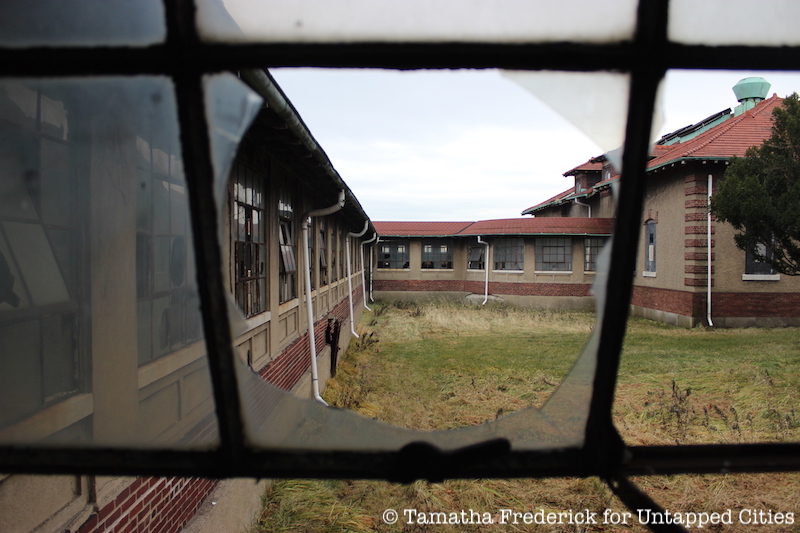
Ellis Island is one of New York City’s biggest tourist attractions and is well known as being one of America’s first immigration stations, but as you step off the ferry and head towards the National Museum of Immigration, the building where upwards of 12 million immigrants were processed, you may notice another sprawling complex of brick buildings just across the waterway. These buildings are the abandoned remains of the once thriving Ellis Island Hospital which has been closed to the public for over sixty years. You can gain access to explore inside this abandoned complex with Untapped Cities!
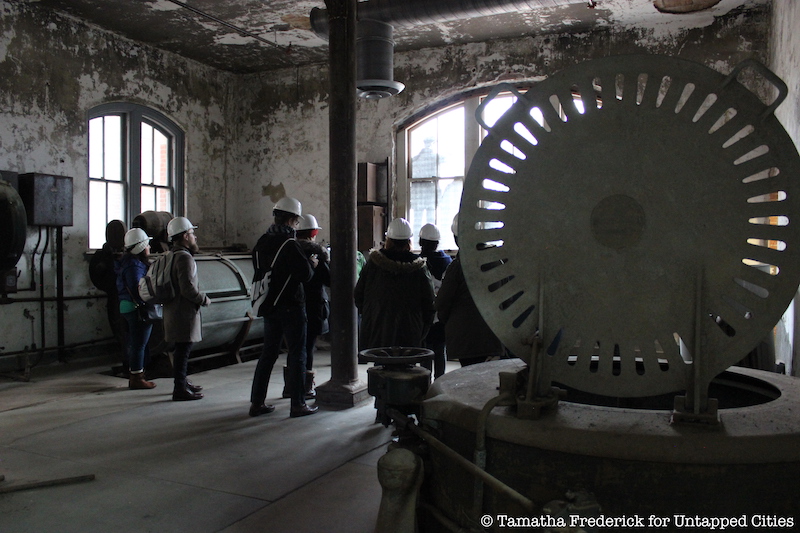 The laundry room at the Ellis Island Hospital
The laundry room at the Ellis Island Hospital
Untapped Cities’ behind-the-scenes hard hat tour of the 29-building compound includes off-limits access to rooms you normally cannot enter, including the kitchen and autopsy room (with stadium seating!), as well as the guidance of a highly trained Save Ellis Island educator. Proceeds from the tours benefit Save Ellis Island, a non-profit working to restore the hospital.
Behind-the-Scenes Hard Hat Tour of the Abandoned Ellis Island Hospital
The Ellis Island Hospital was in use from 1901-1951 and in that time, it saw a lot of business. During the tour, you’ll learn not only about the hospital and its functions but also about Ellis Island in general, a place that 40% of Americans can trace their roots to today. Here is a preview of some of the most surprising facts you will learn on the tour:
8. The First Immigration Station Was Actually on the Mainland
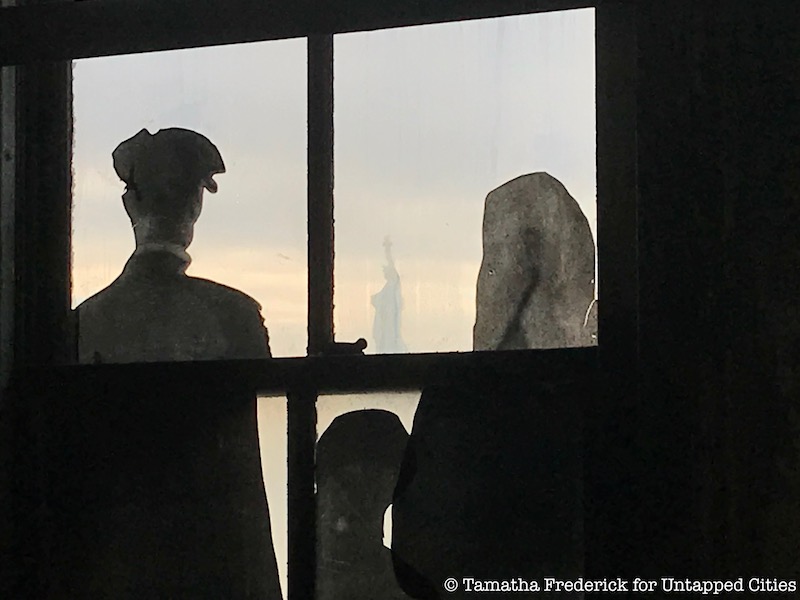
From 1855 to 1892, immigrants arrived in New York City via Castle Clinton’s immigration station, also known as Castle Garden. It is believed that about 8 million immigrants were welcomed during this period including people like Andrew Carnegie and Nikola Telsa. However, unlike the well-oiled system that Ellis Island would eventually become, Castle Garden’s station was a bit unscrupulous. There was little screening for immigrants coming into the United States in terms of diseases. Some would bribe guards in order to pass inspection. In addition, new arrivals were met with scam artists trying to take advantage of their naivety. Many immigrants bought fraudulent train tickets or ended up working as cheap labor.
In 1890, the federal government took control of immigration processing and the station was moved to Ellis Island in 1892. The island location helped avoid the negative activity rampant on the mainland. It also allowed for regulated health inspections.
7. The Stairs of Separation Led to Freedom, Detainment, or Hospitalization
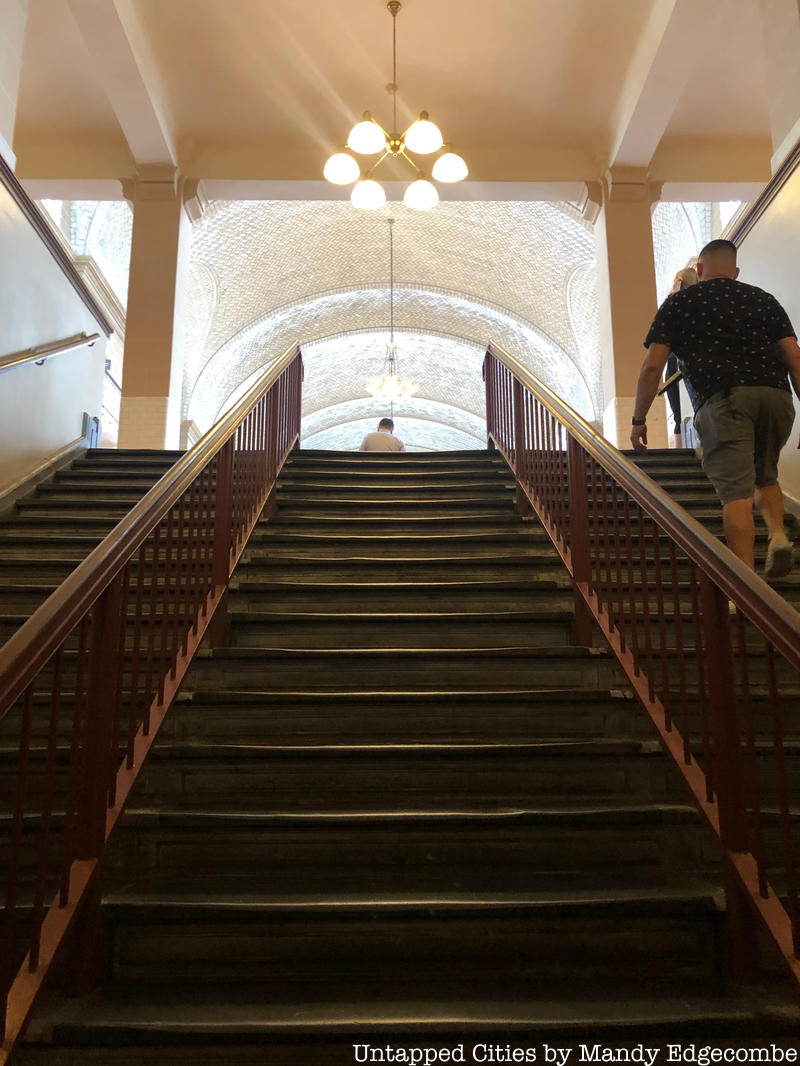
In its heyday, Ellis Island processed between 2500-10,000 people per day. Each new arrival had to pass a health inspection in order to be allowed entry in the United States. They were first screened while on their ship coming into Lower New York Bay. This is where those with “the plague” were weeded out and quarantined to stations on two islands: Hoffman and Swinburne Island. The rest of the passengers funneled through Ellis Island.
Upon arrival on Ellis Island, immigrants would shuffle to the Great Hall for further inspection. Using a quick “doctor’s gaze,” doctors would mark immigrants with a code chalked onto their clothing indicating the ailment (such as PG for pregnant or B for back). After a full assessment, immigrants were released from the processing center via the “stairs of separation.” If exiting through the left side staircase, immigrants were headed to the detention center. If they were sent through the middle staircase they were usually headed to the hospital for further inspection or long-term stay. Those who passed inspection would likely take the right side staircase out to ferries that would carry them into America.
6. Deported Immigrants Were Sent Back at the Steamship’s Expense

Not everybody passed inspections at Ellis Island, health related or otherwise. In fact, two percent of the passengers were deported. There were many reasons that this could happen. Immigrants that would likely become a burden to the state— such as individuals who were deemed outright feebleminded or lacked physical agility— often were denied entry. There were also those with low moral character that were rejected; immigrants with criminal backgrounds, for example.
The steamships were largely responsible for the unfortunate passengers who were forced to make the transatlantic journey back to their homeland. That is, they had to pay for the passenger’s return trip as well as any expenses incurred while on Ellis Island including their food and sleeping arrangements. The steamships did have extensive screening before passengers left for Ellis Island. However, there were always some that slipped through the cracks.
Keep reading for more surprising facts, and grab your tickets for an upcoming Behind-the-Scenes Hard Hat Tour of the Abandoned Ellis Island Hospital!
Behind-the-Scenes Hard Hat Tour of the Abandoned Ellis Island Hospital
5. Florence Nightingale Influenced the Hospital’s Low Mortality Rate
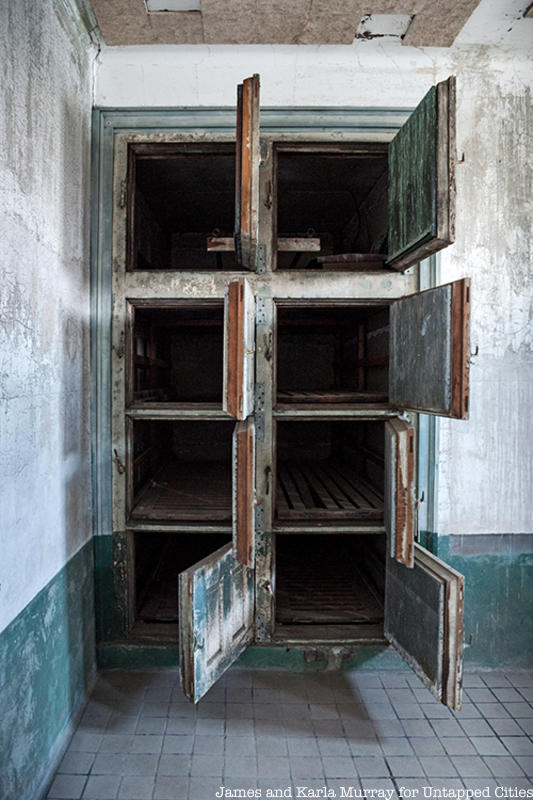 The morgue at the Ellis Island Hospital
The morgue at the Ellis Island Hospital
Ellis Island Hospital was not initially set up to treat infectious diseases. The government didn’t provide sufficient funding nor were there enough beds for the large influx of immigrants. Alas, many of the first sick patients were taken to the mainland until the high demand called for adequate facilities to be built on the island. The hospital eventually grew to be the largest public health facility in the country. Though a plethora of diseases were present in the hospital, steps were made to deter cross contamination.
The concept was simple: separate patients with different infectious diseases, a “pavilion” style plan based on Florence Nightingale’s theory. This was accomplished by putting doors at least twenty-five yards away from the next, or putting highly contagious diseases on different floors. Rooms never faced each other so the diseases weren’t transmitted easily. They also made sure to separate the maternity ward (see #3) from patients with infectious diseases using a 100-yard waterway. Thanks to this system, the Ellis Island Hospital was on par with any other hospital in the world. There were only about 4,000 mortalities which amounted to about 2% of the patients.
4. The Nurses Were the Most Advanced in the World
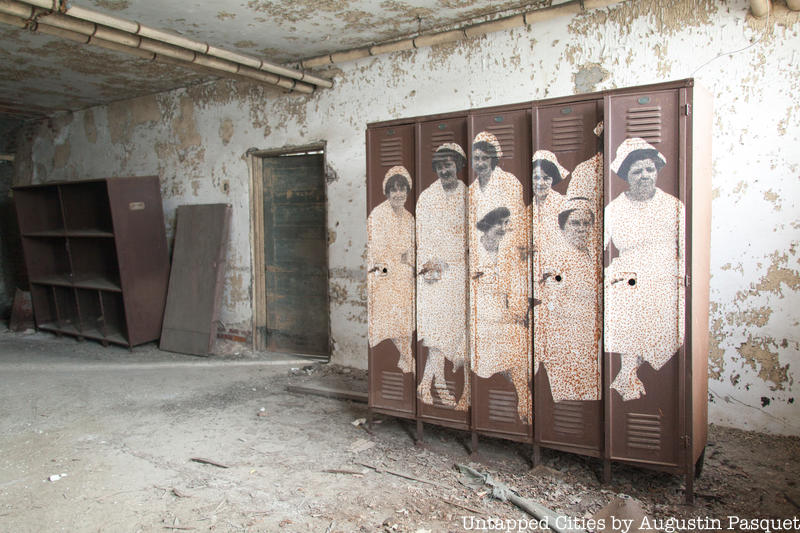
Nurses played a significant role in the Ellis Island Hospital. After all, patients needed a friendly face in the midst of language barriers and illness. The hospital employed about twenty-five nurses, all of whom had to be unmarried. In addition, these nurses were considered to be highly qualified. They had to have two years of college as well as three to five years of nursing school. According to the tour guide, nurses only made about $600 per year despite the hardships they faced in dealing with contagious diseases.
Though the pay wasn’t anything to write home about, the nurses were known to form unique bonds with their patients. Mothers would name their newborn children after them. Memos were circulated that warned doctors and nurses to stop with all the hugging. In fact, the loving care was so effective at this hospital that New Yorkers themselves tried to get in.
3. Around 350 Babies Were Born on Ellis Island

Female immigrants who were examined and deemed pregnant were marked with a chalk “PG” in their initial arrival onto Ellis Island. Being pregnant meant a burden to their new country and they were often detained. That is, unless they could prove they would be taken care of and supported. Some of these women were sent back to their home countries— especially if unmarried— others were taken to the hospital where they gave birth.
According to our tour guide, these new mothers were treated well. They were taught English and literacy skills to help them successfully transition to the mainland. However, one consequence of being born in limbo was that these babies were not initially issued birth certificates. When they did obtain them, the certificates didn’t state where they were born.
2. The Word “Moron” Was Coined Here

Despite the hospital’s many redeeming qualities, it was still a hospital in the early 20th century and the notions of mental illness carried different meanings. For example, patients were lumped into the same category whether they had epilepsy, cultural/ language barriers, or an actual mental handicap. Perhaps equally unfortunate was how certain patients were labeled at the hospital.
American psychologist Henry H. Goddard developed an intelligence testing program at the Ellis Island Hospital. Through this test, he could classify hospital patients based on their IQ. This was used to help keep “feebleminded” immigrants out of the United States. A “moron”— from the Greek word “moros” meaning dull— referred to people with an IQ between 51 and 70. Other politically incorrect classifications included “imbecile” (25-50 IQ) and “idiot” (0-25 IQ). Needless to say, about 80% of the immigrants studied at the hospital were deemed “feebleminded.”
1. The Hospital Was Used as a Training Ground for the Coast Guard
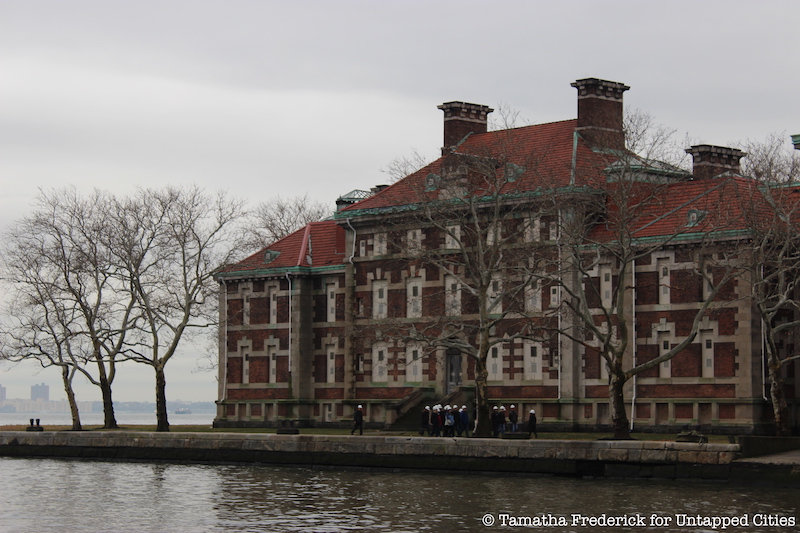
The Ellis Island Hospital closed to immigrants in 1930 due to tightening restrictions on immigrants in the United States— think anti-immigration legislation and the Great Depression. However, the land continued to be used up until 1954 for a variety of services. The FBI used it for an office. German prisoners of war were held there, as were sick and wounded U.S. soldiers.
Between 1939 and 1954, the United States Coast Guard used Ellis Island as a training ground for over 63,000 enlisted men and officers. Our guide informed us that the recreational center on the hospital grounds hosted entertainers for the servicemen.
There’s so much more to discover on the Untapped Cities Behind-the-Scenes Hard Hat Tour of the Abandoned Ellis Island Hospital. The tour is offered every Saturday and select Sundays. Tickets sell quickly, so sign up soon for this truly unique experience!
Behind-the-Scenes Hard Hat Tour of the Abandoned Ellis Island Hospital
Next, check out 9 Surprising Uses of NYC’s Ellis Island Throughout History. Get in touch with the author at freshcoffeestains.com.





